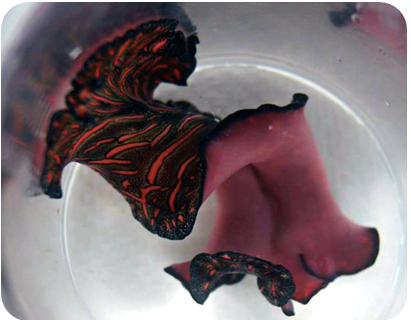Summary
Pseudobiceros bedfordi , also known as the Persian Carpet Flatworm , belongs to the Turbellaria clade; a group of free-living flatworms characterised by a soft, dorso-ventrally flattened body. They are found exclusively in shallow tropical waters of the Indo-Pacific region occasionally coming out from beneath boulders to swim over the sandy substrate on reef flats and lagoons on Heron Island.
As nocturnal feeders, they come out at night to feed on ascidians and small crustaceans using their muscular pharynx while they spend the day beneath boulders and in rock crevices.
Their movement away from sunlight is known as negative phototaxis and to test if P. bedford demonstrates this behaviour, a simple experiment was conducted to examine the response of P. bedfordi to light exposure using 3 light colours( red, green, white) to simulate varying wavelengths.

Figure 1. Pseudobiceros bedfordi swimming in a twisted motion

Figure 2. Dorsal view of Pseudobiceros bedfordi
|